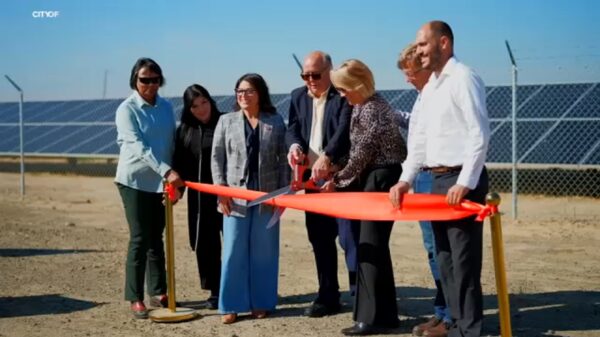U.S. lawmakers are demanding transparency from the Environmental Protection Agency (EPA) regarding delays in a critical report on toxic chemicals known as PFAS (per- and polyfluoroalkyl substances). Representative Dan Kildee, a member of the House Appropriations Committee, has raised concerns about the potential health risks these substances pose and the government’s response to this growing crisis.
The EPA was expected to release a comprehensive report on PFAS in January 2023, detailing its implications for public health and safety. However, the report remains unpublished, leading to frustrations among lawmakers and environmental advocates alike. Kildee’s insistence on answers reflects a broader urgency to address the impact of these “forever chemicals” that are pervasive in the environment and human bodies.
PFAS are known for their persistence in the environment and have been linked to serious health issues, including cancer, liver damage, and developmental problems in children. With an estimated $5 billion allocated to combat PFAS pollution, the delay in reporting has raised questions about how effectively these funds will be utilized and what steps will be taken to mitigate the risks associated with these chemicals.
Kildee specifically called for the EPA to provide a clear timeline for the report’s release. He emphasized that the lack of information is not only a disservice to the public but also hampers local and state efforts to address contamination and clean-up initiatives.
The EPA’s delay has prompted a wave of criticism from both sides of the political aisle. Lawmakers are increasingly aware of the urgency surrounding PFAS, as communities across the nation grapple with contamination issues. In Michigan, where Kildee serves, residents have expressed alarm over the presence of these chemicals in drinking water and the potential long-term health effects.
Environmental organizations have also weighed in, highlighting the need for swift action. They argue that the incomplete data prevents communities from fully understanding the risks and taking necessary precautions to protect public health.
The EPA has not yet issued a formal response to Kildee’s inquiries, leaving many in anticipation of further developments. As the situation evolves, the focus remains on ensuring that the agency prioritizes public health and transparency in its handling of PFAS-related issues.
With increasing pressure from lawmakers, activists, and constituents, the EPA faces a critical moment to demonstrate its commitment to addressing environmental health concerns. The outcome of this situation could have lasting implications for regulatory practices and the protection of communities at risk from toxic contamination.







































































